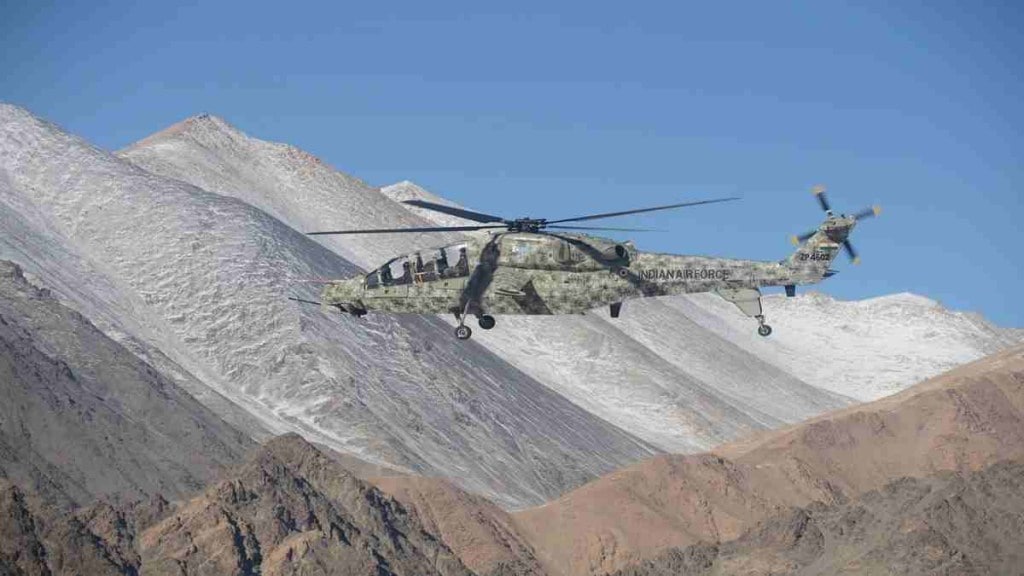The Indian Army is eyeing the acquisition of 95 `Prachand’ Light Combat Helicopters (LCH) for mountain warfare, as well as 110 Light Utility Helicopters (LUH) to replace its aging Cheetahs and Chetaks.
In an interaction with a select group of journalists on the sidelines of the ongoing Aero-India 2023, Chief of the Indian Army Gen Manoj Pande also confirmed that the Army would receive an initial lot of six Advanced Light Helicopters (ALHs) from Hindustan Aeronautics Limited (HAL), but has requested certain improvements, including autopilot capability.
He said that the Army is currently in the process of executing the 4th tranche of Emergency Procurements and it has identified around 80 projects which amounts to roughly Rs 15000 crore. According to the chief in terms of the overall combat aviation profile, the Army is looking at 90-95 LCHs.
To a question about the delivery of the expected delivery timeline of AH-64E Apache attack helicopters, the chief said that the Army expects to receive all the six it has ordered by 2024 from the US. The first of the six is arriving in the first half of 2024. The sale of these six is also through government to government and Foreign Military Sales (FMS). If any follow-on order – the chief indicated that any additional orders will all depend on how the Prachand shapes up.
The chief said that the LCH is very versatile in terms of manoeuvrability and has been found to be better suited for high altitude. While both the Indian Air Force (IAF) and the Army have raised their first squadron of LCHs, the helicopter lacks its main arsenal and protection suites for now and will take time to be fully operational.
The LCH helicopter, also known as the tank buster, will get its anti-tank guided missile (ATGM) only by mid-2023. The anti-tank missile selected for the LCHs was the indigenous Helina (Helicopter Mounted NAG), developed by the Defence Research and Development Organisation (DRDO) which has cleared trials.
Financial Express Online has reported earlier that the Defence Acquisition Council has already given its approval for the procurement of 500 missiles and 40 launchers. According to the chief, “Integration itself is important and it is a work in progress.”
Responding to a question about the indigenous LUHs, the Army chief said that they fall in the category of recce and observation. The Army has around 250 Cheetahs and Chetaks, which will be replaced by the LUHs, Gen Pande said.
He also spoke on the relevance of helicopters in warfare, noting that the new helicopters would have a number of suites to operate in contested environments. He added that indigenisation of air defence guns was a priority for the force and that integrated electronic warfare systems are being tested along the Line of Actual Control (LAC). Despite concerns over the use of attack helicopters in the ongoing Russia-Ukraine conflict, the army chief argued that helicopters would continue to have relevance in warfare, just as tanks and anti-tank systems do.
The Army had moved its first LCH squadron, 351 Army Aviation, to Missamari, Assam in November 2022 in the Eastern sector located near the Line of Actual Control (LAC). This is also the first dedicated attack helicopter which is being operated by the Army. It has the Rudra weaponised Advanced Light Helicopter (ALH). So far the Army Aviation has three Brigades which are positioned at Leh, Missamari and Jodhpur and around 145 indigenous Advanced Light Helicopters (ALH) out of which 75 are Rudra and also 190 ageing Cheetah, Cheetal and Chetak helicopters are deployed. Along with these another 25 ALH Mk-III are on order which are expected to be inducted within two years.
Niche Technology
He said that the Army is adopting niche technology in a big way and is also looking at right sizing its manpower. The chief further stated that with the new technology inducted it would help to optimise the manpower and he also referred to cutting down on animal transport in high altitude terrains.
In response to a question he said that by 2030 the Army will have brought down our animal transport in high altitude areas by 50-60 percent.

